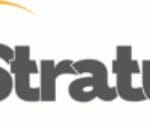~ Making the most of legacy equipment ~
According to the Annual Manufacturing Report, 2018, four in five manufacturers believe that smart factory technologies will improve their supply chain relationships. The proposed benefits of data collection from smart sensors are huge, but some manufacturers still feel that a smart factory is out of their reach.
Here, Nick Boughton, digital lead at systems integrator Boulting Technology explains how plants with legacy equipment can retrospectively upgrade their facility to a smart factory.
Plants across a wide range of industry sectors worldwide contain an abundance of legacy equipment. Particularly in industries with high turnover of low margin products, such as many food and beverage, plant managers may not perceive themselves to have the budget to upgrade equipment, or the time to shut down a section of the production line for installation.
The legacy equipment that remains can cause a multitude of issues, including lack of service and support from manufacturers and an increased risk of breakdown as equipment ages. Each of these are complicated by obsolescent equipment and difficulty getting hold of the parts needed for repair.
However, in many plants these risks are well managed and so the equipment, alongside its related historical data, is essential.
Being smart
Plant managers may accept that machinery can’t be upgraded, but this does not mean they shouldn’t explore the benefits of the smart factory and connected technology, including predictive maintenance, productivity improvements and quality control.
The aging legacy equipment was likely not built with connectivity in mind and there is simply no way to connect it to the existing industrial network. Despite making financial investments when purchasing equipment, there is no reason to believe you can’t upgrade a plant to make it more intelligent.
Retrofit
A wide range of industrial automation suppliers are now offering add on solutions that can provide these benefits. A ‘black box’, which can be installed alongside existing, isolated, equipment can integrate it with the network, allowing the box to read and communicate data from the machine without any changes to existing hardware or software.
In addition, software within the system can allow for visualisation of performance metrics, making it easy for plant managers to identify targets for improvements allowing the system to run more efficiently.
Although each box is different, the overall concept remains the same. A controller collects runtime data via I/O or fieldbus protocols before using software to process it with no need for changes to existing equipment or analysis. This allows for easier and more in-depth monitoring of processes as well as energy consumption. Collating the data from multiple pieces of equipment gives an overall interactive visual of the plant, allowing for real time monitoring.
This can also be integrated with a predictive maintenance schedule, as the data produced highlights potential breakdowns before they happen. For example, a conveyer which is becoming less efficient over time could have a motor that has worn or could require a lubricant change.
Concerns
The analysis, collection and visualisation software required for these applications can be expensive to purchase outright. Allowing plant managers to use their machines as a service, rather than buying each package individually, is becoming more popular. Because the services are integrated, life cycle management and software updates with enhanced features and security updates are combined as part of the service subscription.
With the wide range of options already available, it can be difficult to know which retrofitting solution would fit your plant best and how to overcome any compatibility issues that might arise. For complex systems, expert advice from an independent systems integrator such as Boulting Technology is advised. Choosing the correct option for your plant, process and systems is essential to achieving a wide range of benefits including better supply chain relationships, which four out of five manufacturers believe is possible.
For more information about integrating legacy systems, or help choosing the best retrofitting option, contact Boulting Technology on 01985 720 090 or visit www.boultingtechnology.co.uk.






